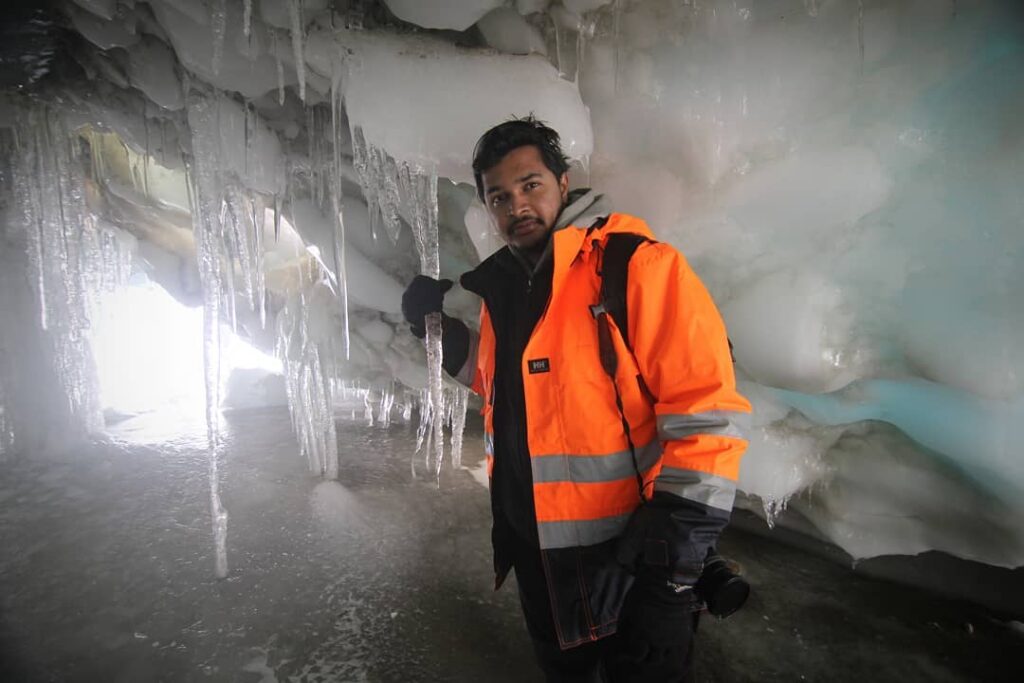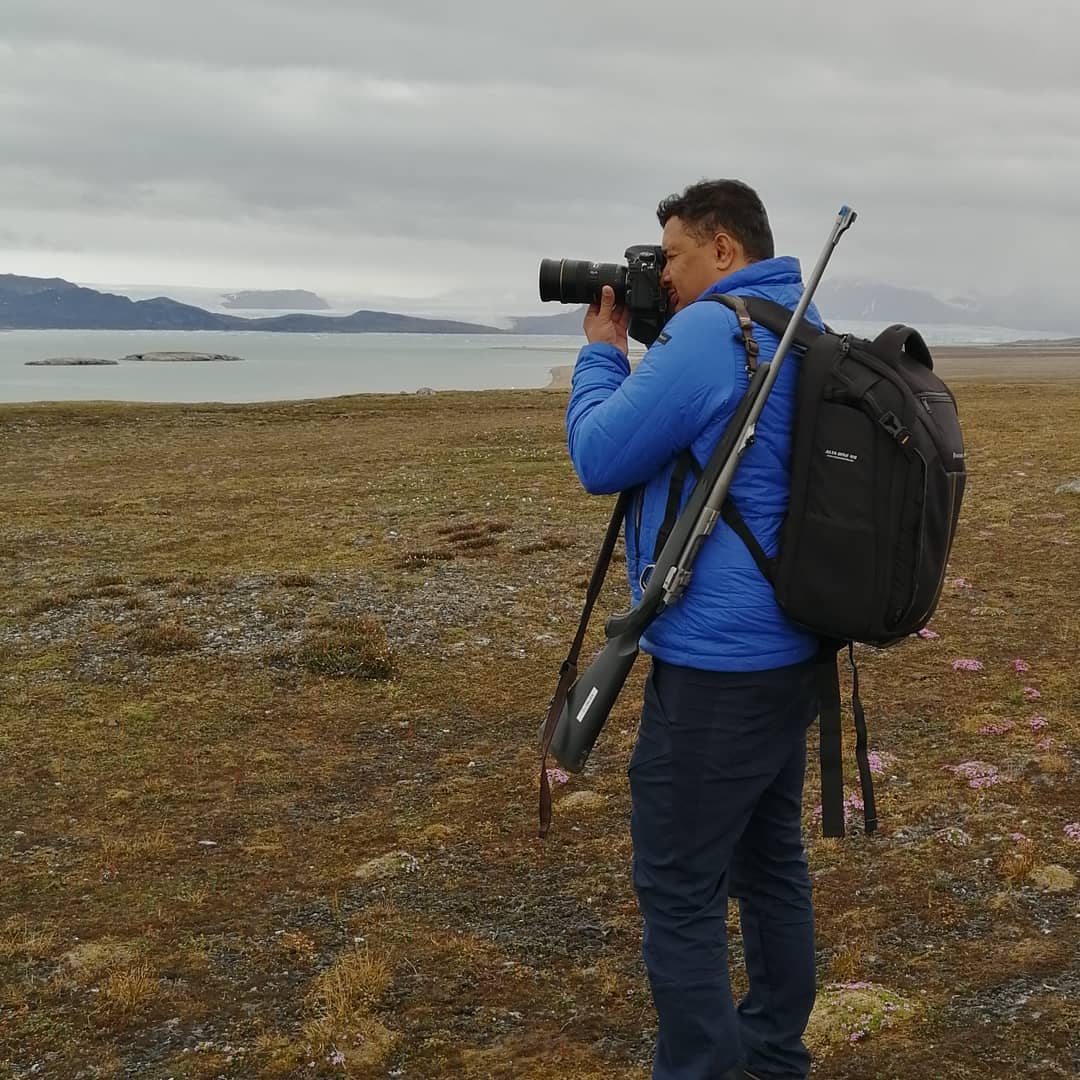
Science-obsessed filmmaker Rakesh Rao’s journey is anything but ordinary. A Goan filmmaker who grew up visiting local observatories and planetariums, now explores the icy expanses of the planet’s cryospheric polar regions. As he returns to Clube Tennis de Gaspar Dias on July 19, as part of the club’s centenary celebrations, Rao is all set to take the audience on a virtual expedition through the polar regions.
Twenty years ago, a young Rakesh Rao could never have imagined that his fascination with astronomy would one day bring ISRO knocking at his door for the teaser of Chandrayaan-2. Today, this Bambolim-based photographer, filmmaker and science communicator has dedicated his career to making complex science accessible by creating films and visual content that communicate scientific material in ways that can be understood by the masses.
Having attended various lectures from scientists in the National Centre for Polar and Ocean Research and the Goa Science Centre, he began developing a deep interest in Antarctica. He fell in love with the southern polar habitat, which led to him applying for the Indian Antarctic programme, a prestigious opportunity which unfortunately could not be funded. But, he didn’t let that obstacle stop him.
When India was setting up Bharati, the third Indian research station in Antarctica, Rao finally pitched a project to document the scientific progress. It was well received, and his efforts led to not just one but three expeditions to Antarctica. He recalls, “My work was acknowledged after returning. I was given another opportunity to complete filming the centre as the construction took time.”
Over the span of his career, Rao has completed four expeditions to Antarctica, one to the Southern Ocean, one to the Arctic Circle and several to the Himalayas, spending nearly two years in Antarctica alone, documenting scientific activity while braving the extreme environment. These efforts have resulted in several widely appreciated films focussed on these seemingly harsh habitats aimed at public outreach and science communication.
“The Arctic has multiple health facilities and is shared among many countries. Because it is not very far off from civilisation, the Arctic is pretty accessible,” he explains. But on the other hand, expeditions to Antarctica are highly planned, much in advance. “The closest civilisation is six thousand kilometres away,” he says. Yet, Rao says the most challenging terrain of all is the Himalayas. “It’s not just the cold and the isolation. It’s also the altitude. The higher you go, the harder it gets to breathe. But still, I prefer these places. I struggle more in Goa’s heat and rain!”
The rigorous selection process for the Indian Antarctic Program begins with eight to ten days of mandatory, intense medical screening at AIIMS (All India Institute of Medical Science), New Delhi, to ensure optimum health while on the expedition. Following a green signal from the doctors, participants undergo a fifteen-day training with the Indo-Tibetan Border Police Force at Auli, Uttarakhand, of rescue and survival training, followed by snow and avalanche training in Mangaon, a region of higher altitude, preparing them for the harshest conditions nature has to offer.
One of Rao’s most acclaimed works, The Climate Change, won the Best Science Film award at both the International Science Film Festival of India and the 10th National Science Film Festival, yet awards don’t bring him joy as much as the idea of communicating science in an interesting manner, inspiring young minds. “Once, I received an email from a kid in Kashmir who told me our film made them realise how much India is doing in astronomy. They were even considering it as a career. That’s what makes this worthwhile and the most rewarding part of this work,” he says.
Rao’s storytelling shines a light on the human side of science, particularly on the arduous lives of scientists working in extreme environments. “There are countless films on climate change, but very few talk about what it takes to actually obtain that data,” he explains. From experience, Rao has witnessed firsthand, researchers who brave minus 45°C with frostbitten noses and hands, at altitudes of 18,000 feet in the Himalayas and in the icy terrain of the South Pole. Apart from their scientific gear, they also have to carry rifles to protect themselves from polar bears, putting their lives at risk all in pursuit of scientific data that talks about climate change.
On July 19, Rakesh Rao will return to a place close to his heart, the Clube Tennis de Gaspar Dias, on account of the iconic institution’s centenary year celebrations, for an audio-visual presentation taking the attendants on a virtual journey through the Arctic, the Himalayas and Antarctica. “This talk feels like a homecoming. I’ve grown up around the Clube. It’s such a historic part of Goa and when I was invited to be part of the celebrations, I immediately said yes. I’ll be sharing not just the breathtaking landscapes but also the science and stories behind them. If even one young mind walks away inspired, like that student from Kashmir who saw my film and realised the possibilities of a career in Indian astronomy, it’ll all be worth it.”
(Rakesh Rao will present an audio visual experience and speak ‘On Thin Ice: Documenting Science in the coldest corners of the earth at Clube Tennis De Gaspar Dias on 19th July at 6:00 PM)


